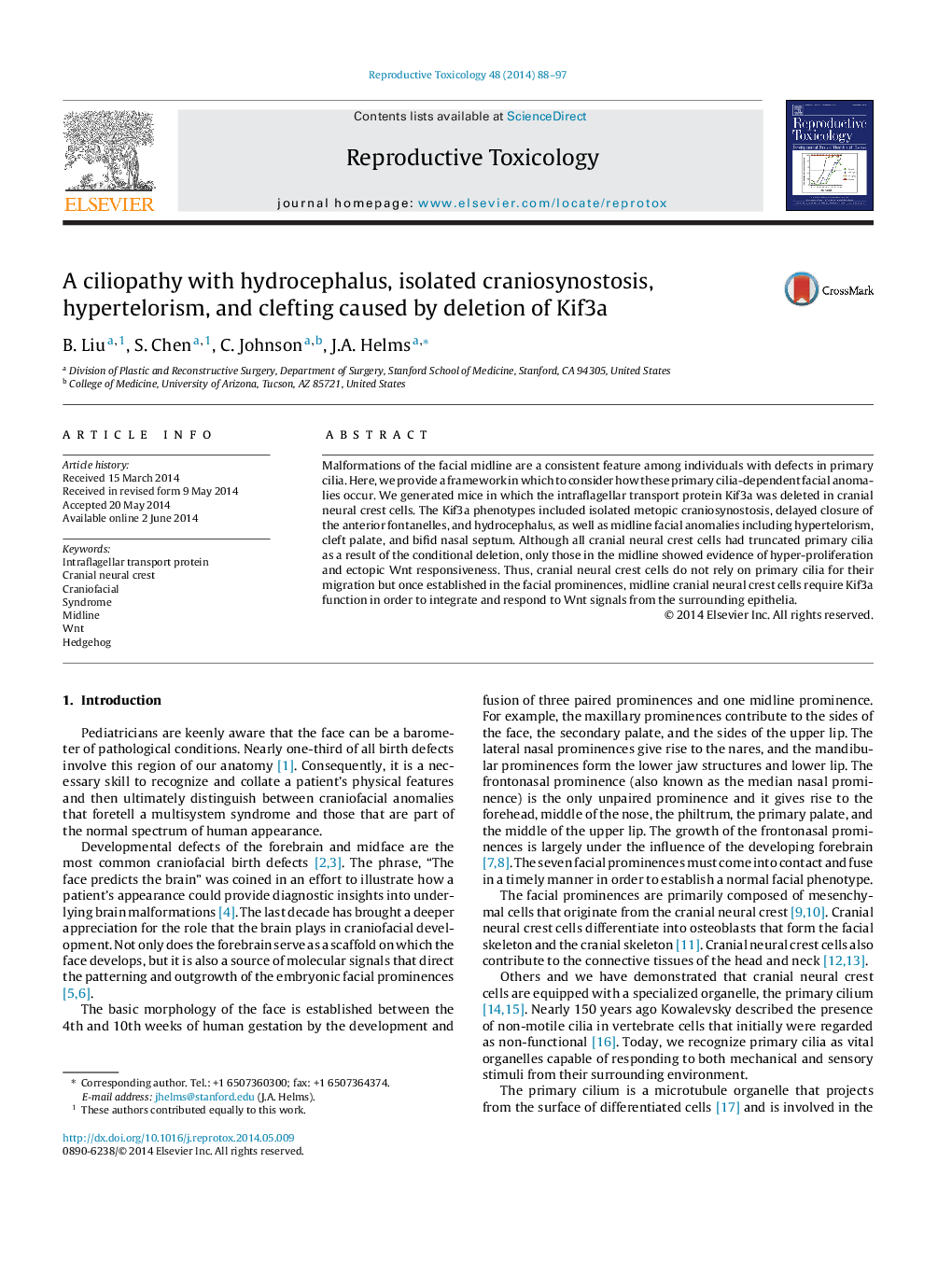| کد مقاله | کد نشریه | سال انتشار | مقاله انگلیسی | نسخه تمام متن |
|---|---|---|---|---|
| 5858584 | 1562171 | 2014 | 10 صفحه PDF | دانلود رایگان |

- Human ciliopathies are frequently associated with craniofacial anomalies.
- We modeled a human ciliopathy by deleting Kif3a in neuroectoderm and neural crest.
- Mutants have hydrocephalus, craniosynostosis, hypertelorism, clefting and bifid nose.
- Phenotypes correlate with abnormal Wnt signaling in the facial midline.
Malformations of the facial midline are a consistent feature among individuals with defects in primary cilia. Here, we provide a framework in which to consider how these primary cilia-dependent facial anomalies occur. We generated mice in which the intraflagellar transport protein Kif3a was deleted in cranial neural crest cells. The Kif3a phenotypes included isolated metopic craniosynostosis, delayed closure of the anterior fontanelles, and hydrocephalus, as well as midline facial anomalies including hypertelorism, cleft palate, and bifid nasal septum. Although all cranial neural crest cells had truncated primary cilia as a result of the conditional deletion, only those in the midline showed evidence of hyper-proliferation and ectopic Wnt responsiveness. Thus, cranial neural crest cells do not rely on primary cilia for their migration but once established in the facial prominences, midline cranial neural crest cells require Kif3a function in order to integrate and respond to Wnt signals from the surrounding epithelia.
Journal: Reproductive Toxicology - Volume 48, September 2014, Pages 88-97